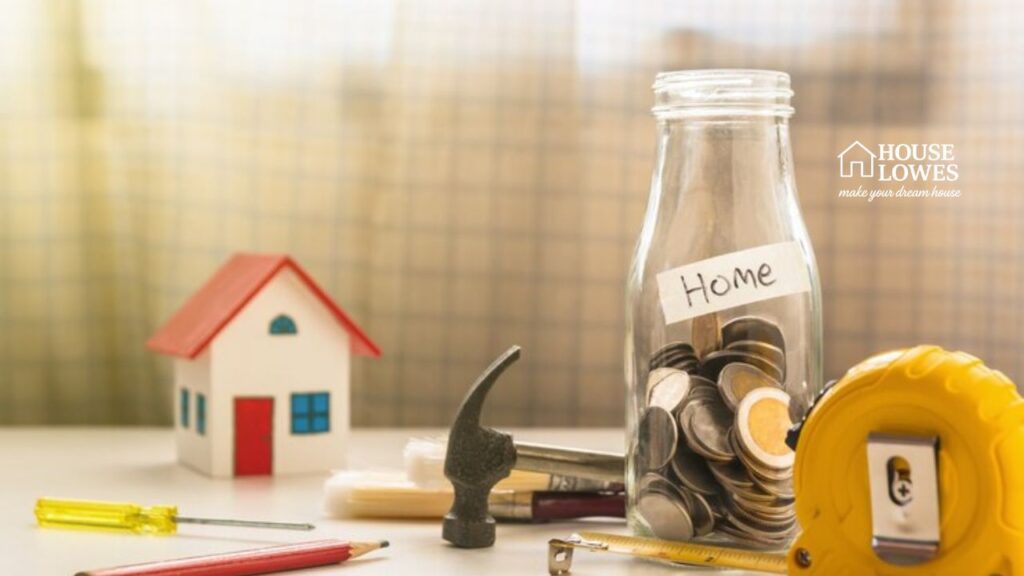Picture this: Your kitchen looks straight out of a 1980s sitcom, your bathroom tiles are cracking, and your roof sounds like it’s tap-dancing in a storm. But don’t stress! A home improvement loan could be your ticket to creating the dream house you’ve always wanted. Curious about how this works? Don’t worry—I’m here to break it down in the simplest way possible.

Whether you’re adding a deck for summer BBQs or replacing your leaky roof, knowing how home improvement loans work will help you make the best decision (and save some cash).
What Is a Home Improvement Loan?
Think of a home improvement loan as a “fixer-upper fund.” It’s money you borrow specifically to spruce up your home. But here’s the cool part: you don’t need to wait years to save up for it! These loans give you access to cash upfront, letting you start your projects ASAP.
There are two basic kinds:
- Secured loans that require collateral (like the equity in your home).
- Unsecured loans that don’t, but might have higher interest rates.
Still with me? Awesome. Let’s dig a little deeper.
How Does a Home Improvement Loan Work?

Imagine your loan as a super helpful friend who gives you money but expects it back with interest (hey, they’ve got bills too!). You borrow the amount you need (called the loan amount) and repay it over a set period, like 5 or 10 years (that’s the repayment period).
Interest gets added on top of the amount you borrowed—that’s how the lender makes their money. A fixed interest rate means your payments stay the same each month, which makes budgeting a breeze.
Here’s a quick glance at the process:
- You apply. This means showing the lender your income, credit score, and debt-to-income ratio (basically, how much you earn vs. how much you owe).
- Get approved. You’ll snag an approval if the lender is confident you can repay the loan.
- Get the money. Once approved, the funds are yours to spend on renovations.
- Pay it back. Monthly payments that fit into your budget bring you closer to completing repayment.
Sound simple? It really is!
Where Does the Money Come From?
You’ve got options:
- Personal loans or lines of credit.
- Home equity loans (secured loans based on how much of your home you own outright).
- HELOCs (Home Equity Lines of Credit) which work like a credit card for your home equity.
- Cash-out refinances, giving you a lump sum by replacing your current mortgage (if rates are favorable).
Each option works a bit differently, but the idea stays the same: You get the funds to give your home some TLC, then pay the lender back over time.
Why Get a Home Improvement Loan?

The Emotional Payoff
Who doesn’t want a cozy home that feels like you? Want to brighten up your family room to make movie nights extra special? Or expand your kitchen for better bonding over meal preps? A home improvement loan helps make dreams reality without emptying your wallet all at once.
Get More Bang for Your Buck
Renovations aren’t just about looking good. They can also boost your home’s value. Think about it: A new roof or energy-efficient windows will likely earn you money in the long run.
Possible Tax Deductions
Did you know you might be able to deduct loan interest from your taxes? Yep, if you’re using the funds to “substantially improve” your home, Uncle Sam might give you a break.
Key Terms Simplified
Wondering about some of those loan-related terms? Here’s the cheat sheet you didn’t know you needed!
- Debt-to-Income Ratio (DTI): A formula that shows if you earn enough to handle your new loan. A lower DTI is better.
- Loan Term: The total amount of time you’re allowed to repay the loan. Shorter terms = higher payments, lower interest costs.
- Fixed Interest Rate: Your interest stays the same, making payments predictable.
- Draw Period: Time when money can be borrowed in chunks (applies to HELOCs).
- Equity in Your Home: The part of your home that’s fully paid off and can be used for loans.
Pros and Cons of Home Improvement Loans
The Good Stuff
- Quick access to the cash you need for your dream home.
- Can increase your home’s value.
- Flexible options like personal loans or lines of credit.
- Fixed rates give you stable monthly payments.
The Not-So-Great
- Interest costs over time can add up.
- Defaulting on a secured loan could risk your home.
- Higher interest rates for borrowers with lower credit scores.
Quick Tips for Choosing the Best Loan
- Know Your Budget. Stick to a project you can comfortably afford.
- Shop Around. Compare lenders for the best rates and terms.
- Check Your Credit Score. Higher credit scores = lower rates.
- Ask About Prepayment Options. Can you pay it off early without penalties?
FAQs
1. Are home improvement loans hard to get?
Not at all! If you’ve got decent credit and regular income, chances are good you’ll get approved.
2. Can I use a home improvement loan for anything?
Most lenders expect you to spend the money on home projects. However, options like personal loans are often more flexible.
3. What’s the difference between a personal loan and a secured loan?
A personal loan doesn’t use collateral but may have a higher interest rate. Secured loans are backed by something valuable, like home equity.
4. Which type of loan is best?
If you’re unsure what you need, start small with a personal loan. For bigger projects (like additions), consider a home equity loan.
5. Do I need a contractor for renovations?
Not necessarily. For big projects (like electrical or plumbing), it’s smart to hire a pro.
Time to Build Your Dream Home!
Home improvement loans are like the fairy godmother of home projects. They give you the financial magic to transform your house into exactly what you want it to be. Whether you’re adding value to sell later or simply making your forever home cozier, these loans make it all possible.
And here’s the cherry on top? You’ll never have to look at that peeling wallpaper again.
Go on and start building your dream home today!
Admin Recommendation
Why Choose Old Dominion for Home Moving? Reliable & Affordable
Step-by-Step Guide to Spiritual Rituals for Moving Into a New Home











